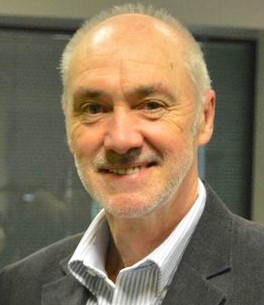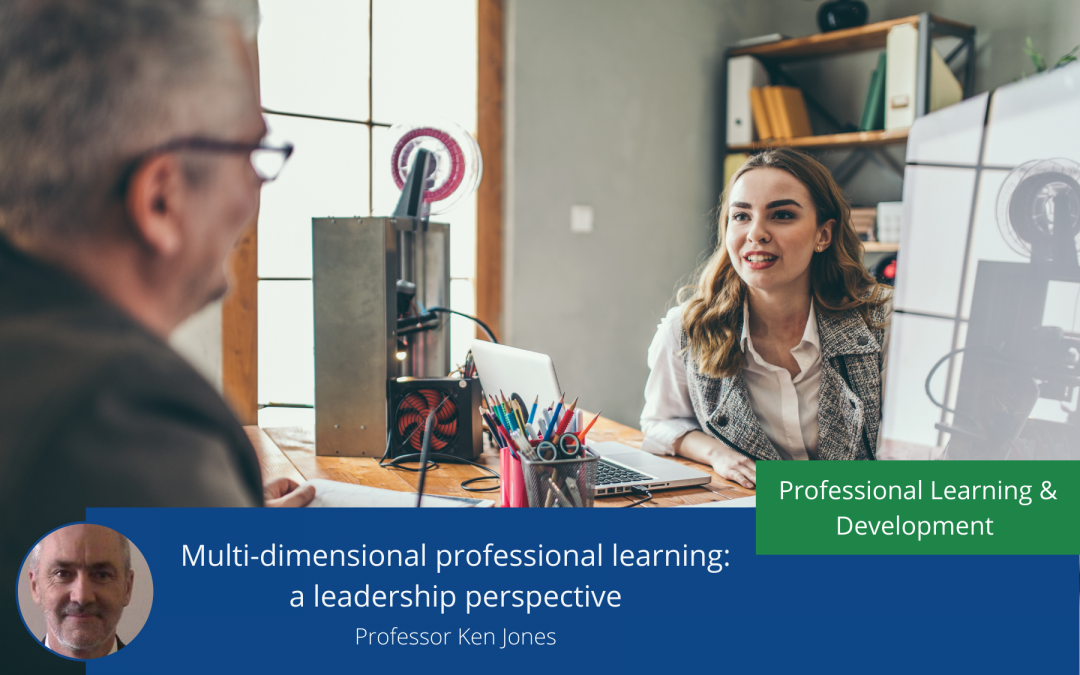We’ve moved on a long way since the realisation that formal ‘training’ is only a small part of the professional learning process. We now understand the implications of working and learning in complex environments and appreciate that learning is active, not passive. We can’t develop professionals, but as leaders and colleagues, we can support their development. So, the first dimension of professional learning we need to appreciate is the centrality of the individual professional.
Dimension 1: Centrality of the Individual Professional
As a leader, I need to understand that while I have my priorities, and we as collaborative professionals need to work together to achieve them, it is each of you, my colleagues, who will bring the motivation, the experience, the questions, the ideas and the critical challenge to achieve what we want for ourselves and for our students. I need to understand how, as a classroom teacher or teacher leader, you have identified your own priorities.
I need to be aware of how your priorities are shaped by your own career path and whether there are barriers to your professional learning that I can help to remove.
There are five key elements to this first dimension:
- Re-positioning: are you ready for a new challenge such as teaching a different part of the curriculum or age range? Or even experiencing teaching in a different school or with aspiring professionals in Initial Teacher Education? Can I open doors for you to do this?
- Re-visioning: This involves looking more deeply at things you may be taking for granted. It involves asking critical, challenging questions and seeing day-to-day processes with new eyes. In some cases, professional learning should be ‘edgy’ – challenging our existing values and ways of working. It may involve small-scale research, and it may require you to ask me to justify my own values and actions, so I must not be defensive when responding to your questions.
- Extending: in the same way that we support the development of a young person’s knowledge and understanding as they move through school, so we need to encourage stimulation through deep professional learning. Intellectual challenge is important (and a requirement for some professions). How best can I encourage colleagues to engage in further study, wider reading and critical questioning?
- Co-creating: active learning is best undertaken when one or more co-learners can ask constructively-critical questions to move thinking and acting forward. This requires trust and an element of professional security so that confidence is not undermined. As a leader with an overview of the professional environment within my organisation and, through networks, beyond it, I can suggest who might form suitable co-learners for my colleagues.
- Consolidating: It’s a mistake to think that professional learning must be continuous. That means unbroken. It must, however, be continuing so that we revisit our learning and, at times, cruise a little to enjoy what we do well. Constantly questioning and looking critically at our work may prove psychologically challenging. As a leader, I need to be aware of this in myself and others and be careful not to apply pressure to change when well-being is at risk.
Dimension 2: Engagement
The second dimension of professional learning is engagement. This is the ‘doing’ part. Thankfully, we now understand that attending a professional development event does not necessarily enhance learning in planned and determined ways. The recent pandemic has made us realise that formal teaching has to be supplemented with other approaches to learning. The term ‘blended learning’ is often used to describe a mixture of online learning and face-to-face teaching, but this suggests a two-part approach when our engagement with learning is multi-faceted.
The term ‘professional learning blend’ has been used in Wales (Jones et al., 2019) to indicate that professional learning engagement takes many forms throughout a person’s career. It may involve:
- mentoring (as a mentor or mentee)
- presenting ideas and experiences to colleagues in one’s institution or at a conference (virtual or in-person)
- being part of a professional learning network
- studying for a Master’s or Doctoral award
- attending a training event
- observing others, being observed or simply talking about professional experiences with different colleagues.
Or all of these at different points in a person’s career path.
These different experiences will not be treated as separate events; they will merge in many ways to develop more rounded, informed and aware professionals. As a leader, I should not attempt to create a learning blend for others. The blending will be done by the individual professionals themselves. My role will be to help create the space and opportunity for colleagues to engage in these different professional learning experiences and, where appropriate, to prompt individuals to blend the learning into coherent ways of working.
Dimension 3: Application
The third dimension is Application, sometimes called ‘impact’, or effectiveness, or follow-up (or follow-through). It is the understanding that although the professional learning process should be satisfying, much like reading a good book or being in enjoyable company, our purpose as education professionals is to support the learning of others and we must keep these others in mind when we engage in our own professional learning.
As a leader, this is something I need to be most aware of. I am accountable for the quality of teaching and learning in my institution (staff and students), and more than one type of indicator will be used to judge this. So, I need to ensure that the application of professional learning processes is maximised. At times, this means reverting to a performative approach with defined outcome criteria. Often, it is allowing the creative professional to emerge and giving space for the creation of new approaches inside and outside the formal learning environment.
We seem to know what works best in professional learning. Or do we? Stepping back and looking at well-researched and established models of professional learning (see, for example, Boylan (2018), and Kennedy (2014)) allows us to revisit our professional learning programmes as providers and as participants. Beware of claims that “this course will transform your teaching”. Don’t generalise from the findings of evaluations of funded professional learning programmes which show, usually immediately after the event, that participants were highly motivated to change their practice.
Learn from, but don’t emulate, others. Sherlock Holmes, in a rare mentoring moment, said to Dr Watson: “You know my methods: apply them”. But Watson could no more emulate the deductive brilliance of his companion any more than the fictional Holmes could have related the stories as well as their author. So, it’s a little more complex than copying what works in one instance and transferring it into your own context.
Dimension 4: Space
The final two dimensions are space and time. Leaders with responsibility for equitable resource allocation will be familiar with the challenges these bring. Space relates to where the learning takes place. Opportunities to learn outside one’s classroom, beyond the school and even in different countries and cultures are invaluable. Leaders must think laterally to enable learning mobility (ensuring that students aren’t disadvantaged by substitutions in teaching by enabling continuity of learning) and we must protect the ability to experience locational flexibility so that we do not become prisoners of school-based learning.
Dimension 5: Time
The final dimension is time. We could see this in terms of ‘learning hours’ (a dubious criterion to determine the quality of education provision) but it’s more fundamental: it’s about what we are learning and the ways we learn and whether they are set in the past, present or future. The rapid growth in online learning during the COVID-19 pandemic exposed the out-of-date approaches we previously used to structure our education. To what extent do we equip our students for the future and are we ahead of them in our own learning? And are we clear about the ethical issues that this will inevitably involve? Harari (p463) refers to this as the Human Enhancement question: “what do we want to become?”
It would be easier if we could simply manage staff development to ensure that all our teachers perform effectively. At least now we have acknowledged that it’s much more complex than this. We are responsible for leading rather than managing, and we engage in professional learning rather than staff development. Leaders should embrace and celebrate this complexity.
The views expressed in this blog post are from Professor Jones and not necessarily representative of Network 1.

Professor Ken Joes
Chair of the Editorial Board, Professional Development in Education
Ken taught in London before returning to Wales to work as Head of the School of Education and Dean of the Faculty of Humanities in Swansea Metropolitan University. He was Senior Consultant for Professional Learning and Development at UWTSD and is now Professor Emeritus.
His international work has included leading symposia on Professional Learning and Leadership in many European countries, in the USA and in India. He is co-convenor of Network 1 (Professional Learning and Development) of the European Education Research Association.
He has been Managing Editor of the journal Professional Development in Education and is now Chair of the Editorial Board. He was one of the founding members of the International Professional Development Association (IPDA) and of IPDA Cymru.
He now works as an independent education consultant.
References
Boylan, M., Coldwell, M., Maxwell, B. and Jordan, J. (2018) Rethinking models of professional learning as tools: a conceptual analysis to inform research and practice Professional Development in Education 44.1 120-139 https://www.researchgate.net/publication/317126034_Rethinking_models_of_professional_learning_as_tools_a_conceptual_analysis_to_inform_research_and_practice
Harari, Y.V. (2015) Sapiens. A brief history of humankind. London: Vintage https://www.ynharari.com/book/sapiens-2/
Jones, K., Humphreys, R., Lester, B. and Stacey, B. (2019) National Approach to Professional Learning: Research Report The Professional Learning Blend 2.0 Cardiff: Education Workforce Council https://www.ewc.wales/site/index.php/en/?option=com_fileman&view=file&routed=1&name=Professional%20Learning%20Blend%202.0.pdf&folder=&container=fileman-files
Kennedy, A. (2014) Understanding continuing professional development: the need for theory to impact on policy and practice Professional Development in Education 40.5 688-697 https://www.tandfonline.com/doi/abs/10.1080/19415257.2014.955122

